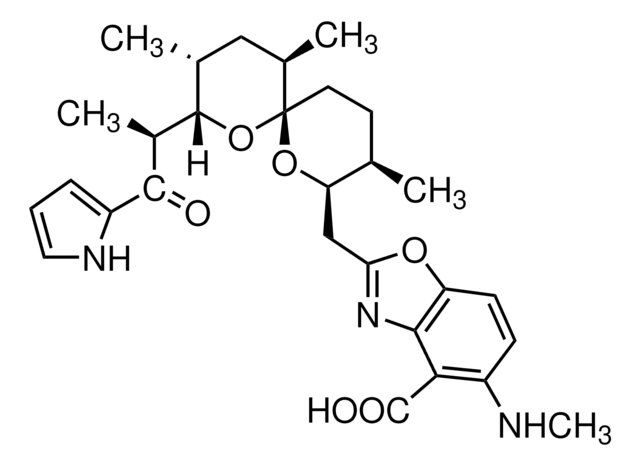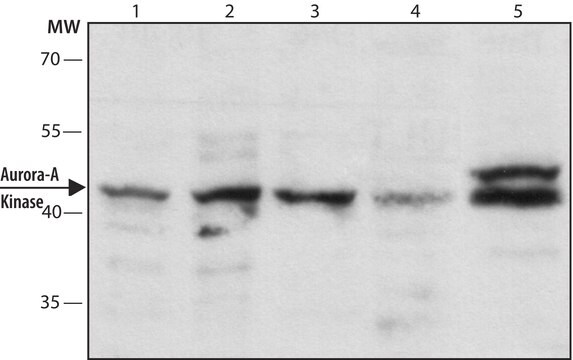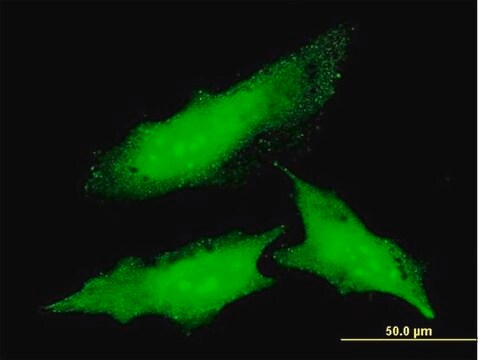詳細
Monoclonal Anti-Ornithine Decarboxylase (ODC) (mouse IgG2b isotype) is derived from the ODC-29 hybridoma produced by the fusion of mouse myeloma cells and splenocytes from immunized BALB/c mice. Its amino acid sequence is well conserved among species; the overall identity of the amino acid sequences of mouse, rat and human ODC proteins is greater than 90%.
Ornithine decarboxylase (ODC) levels increase rapidly after implantation during mouse embryogenesis. The gene encoding this protein is localized on mouse chromosome 12 and human chromosome 2.
特異性
ホルマリン固定、パラフィン包埋されたヒト前立腺および結腸癌の免疫組織化学染色において、標識は上皮細胞に限局しています。
免疫原
リコンビナントマウスオルニチンデカルボキシラ-ゼ。
アプリケーション
Monoclonal Anti-Ornithine Decarboxylase (ODC) antibody produced in mouse has been used in Western blotting.
Monoclonal Anti-Ornithine Decarboxylase (ODC) has also been used in enzyme linked immunosorbent assay (ELISA), immunoprecipitation, immunoblotting and immunohistochemistry.
生物化学的/生理学的作用
Ornithine Decarboxylase (ODC) biological activity is rapidly induced to promote cell proliferation in response to hormones, drugs, growth factors, mitogens and tumour promoters. ODC mRNA levels are also elevated in transformed cells including lung carcinomas and human colon adenomas and carcinomas. ODC activity in colorectal carcinomas has been shown to be greater than that in adenomas, which, in turn, is greater than that of normal mucosa. ODC has a half-life of 8-30 min, the shortest half-life time reported in eukaryotic cells.
Ornithine decarboxylase (ODC) converts L-ornithine to putrescine. It has a role in cell replication. ODC is also involved in the polyamine synthesis pathway. The protein is upregulated in cancers. Overexpression of ODC has been associated with carcinogenesis in mice.
免責事項
Unless otherwise stated in our catalog or other company documentation accompanying the product(s), our products are intended for research use only and are not to be used for any other purpose, which includes but is not limited to, unauthorized commercial uses, in vitro diagnostic uses, ex vivo or in vivo therapeutic uses or any type of consumption or application to humans or animals.









